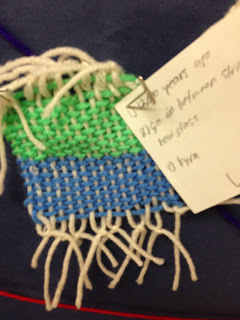Peer Lesson #9 (Crushed Can Fish)

For this lesson learned about the effects recycling has on the environment. For the art portion we created fish out of construction paper, paint, and a crushed soda can. The requirements of the fish is that it needed two different patterns and three different colors. After we created our fish we made a class mural our of cardboard and bottle caps. To end the lesson we had to write down one reason we should recycle on a piece of card stock. For an extension activity I would have student bring in items from their house that they could recycle and create an animal of their choosing. An example is that a student could create a lion out of a two liter bottle, stirring sticks, and construction paper. After the animal is created, I would have them write down 5 facts about the animal they chose. This would tie the art lesson in with science.










